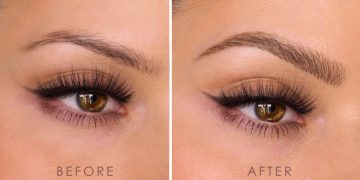Introduction: Seasons and Skin – A Delicate Dance
As the seasons change, so too does the environment that impacts our skin. Temperature fluctuations, humidity changes, and varying levels of sunlight can all leave their mark on your complexion. For many, adapting their skincare routine to the ever-shifting seasons is a game-changer that not only helps maintain healthy skin but enhances its natural glow year-round.
But how do you know when to adjust your routine? And what changes should be made to keep your skin in tip-top shape? In this guide, we’ll break down the best ways to tailor your skincare to each season, using a mix of expert advice and simple tips you can easily incorporate into your day-to-day life.
Why Seasonal Changes Matter to Your Skin
Before diving into the specifics, let’s first understand why seasonal changes matter. The skin is your body’s largest organ and is highly sensitive to its environment. Each season brings a different set of challenges for your skin.
- Winter: Cold air and low humidity can strip moisture from the skin, leaving it dry, flaky, and sometimes irritated.
- Spring: As temperatures rise and allergens bloom, skin may become more prone to breakouts or sensitivities.
- Summer: Hotter days and more sun exposure can increase oil production and cause sun damage, leading to premature aging and other skin concerns.
- Autumn: Transitioning weather can leave skin dehydrated and uneven, with the drop in temperature often leading to tighter, drier skin.
By adjusting your skincare routine according to the season, you can keep your skin hydrated, balanced, and protected year-round.

Spring Skincare: Awakening from Winter’s Slumber
What’s Happening with Your Skin?
Spring is all about renewal—flowers bloom, the air becomes fresher, and the skin begins to shed its winter woes. However, the warmer weather and increased pollen can trigger allergies, leading to inflammation or sensitivity. Spring is also a time when your skin will naturally begin to increase oil production, so managing excess oil while still keeping hydration levels in check is essential.
Key Skincare Tips for Spring:
- Exfoliation: The transition from winter to spring is the perfect time for exfoliation. After months of dry air, dead skin cells may be accumulating, leading to dullness. A gentle scrub or exfoliating toner with AHAs (alpha-hydroxy acids) can revitalize the skin.
- Switch to Lighter Moisturizers: As temperatures rise, your winter-heavy creams might feel too thick. Opt for lighter, gel-based moisturizers that provide hydration without clogging pores.
- Incorporate Antioxidants: Spring is the perfect time to introduce vitamin C serums or antioxidant-rich products to help protect your skin from environmental stressors, including sun exposure and pollution.
- Sun Protection: UV rays are still strong, so sunscreen remains a must! Look for a broad-spectrum SPF 30 or higher.
- Watch for Allergens: If you’re sensitive to pollen or environmental allergens, look for fragrance-free products to avoid triggering flare-ups.
Summer Skincare: Shielding Your Skin from the Heat
What’s Happening with Your Skin?
Summer brings intense sun, higher temperatures, and more humidity—all of which can affect your skin. The increased UV exposure heightens the risk of sun damage, sunburns, and premature aging. Additionally, humidity can cause your skin to produce more oil, which could lead to clogged pores and breakouts.
Key Skincare Tips for Summer:
- Double Down on Sunscreen: If you weren’t already applying sunscreen regularly, now’s the time to start. Opt for a broad-spectrum SPF 50 or higher, and don’t forget to reapply every two hours if you’re outdoors.
- Hydrate, Hydrate, Hydrate: While your skin may feel oilier during summer, it’s still essential to stay hydrated. Look for hydrating mists or water-based moisturizers that won’t leave a heavy residue.
- Oil-Free and Non-Comedogenic Products: To avoid clogged pores, choose oil-free sunscreens and skincare products labeled “non-comedogenic.” Gel-based moisturizers or serums are ideal.
- Exfoliation with Caution: Over-exfoliation can lead to skin irritation, especially under the sun. Limit exfoliating to once a week, and focus on chemical exfoliants (like BHAs) to penetrate pores and prevent breakouts.
- After-Sun Care: Keep your skin soothed with aloe vera gels or cooling lotions after sun exposure. These can help calm any redness or irritation from UV exposure.
Autumn Skincare: Preparing for the Cold
What’s Happening with Your Skin?
Autumn is a season of transition. As the air becomes cooler and drier, your skin begins to lose moisture. The temperature shift can lead to dry, flaky patches, irritation, or even redness. Now is the time to start preparing your skin for winter by focusing on nourishing, hydrating, and repairing it.
Key Skincare Tips for Autumn:
- Rich Moisturizers: Switch back to thicker, more nourishing moisturizers that help lock in moisture. Look for ingredients like shea butter, ceramides, or hyaluronic acid to replenish your skin’s hydration.
- Increase Humidity: To combat dry indoor air, consider using a humidifier at night. It helps keep the moisture levels balanced and prevents your skin from becoming too dry.
- Incorporate Healing Ingredients: Autumn is a good time to introduce products with repairing ingredients like peptides, retinol, or niacinamide. These help encourage skin regeneration and address any lingering damage from summer.
- Don’t Forget Lip Care: Cooler weather often means cracked lips. Switch to a thicker lip balm or one with SPF to protect against the drying winds.
- Anti-Aging Focus: As you prepare for winter, your skin might start showing more signs of aging, especially due to increased sun exposure during summer. Incorporate serums or creams with collagen-boosting ingredients to keep skin looking youthful.

Winter Skincare: Protecting Against the Cold
What’s Happening with Your Skin?
Winter weather presents the harshest challenge to your skin. Cold air combined with indoor heating can strip away moisture, leading to dryness, redness, and irritation. In addition, lower humidity levels make it even more difficult to retain moisture.
Key Skincare Tips for Winter:
- Switch to a Heavy Moisturizer: During the winter months, your skin’s moisture barrier becomes more vulnerable. Thick, emollient-rich moisturizers with ingredients like ceramides, squalane, and hyaluronic acid can prevent water loss and keep your skin hydrated.
- Layer Your Skincare: Layering hydrating products is key to keeping your skin moisturized. Start with a hydrating serum, followed by a rich moisturizer, and top off with an occlusive like petroleum jelly or a thick cream at night to lock everything in.
- Avoid Hot Showers: While hot showers may feel great, they strip your skin of its natural oils. Opt for lukewarm water and limit your shower time to keep your skin’s barrier intact.
- Add an Overnight Mask: Overnight masks are great for providing deep hydration. Use a hydrating or nourishing mask once or twice a week for an extra boost of moisture.
- Protect Your Skin Outdoors: When heading outside, protect your face with a scarf and ensure that your moisturizer is thick enough to create a barrier against the cold.
Final Thoughts: Listen to Your Skin
In the end, adapting your skincare routine to the changing seasons is all about listening to your skin. Every season comes with its own set of challenges, and by adjusting your routine accordingly, you can maintain healthy, glowing skin throughout the year.
Remember, skincare isn’t just about the products you use, but about consistency. Regularly assess how your skin is feeling and respond accordingly—whether that means adding extra hydration in the winter or opting for a lighter moisturizer in the summer. With the right balance, you’ll be able to enjoy smooth, radiant skin no matter what the weather throws at you.

















































